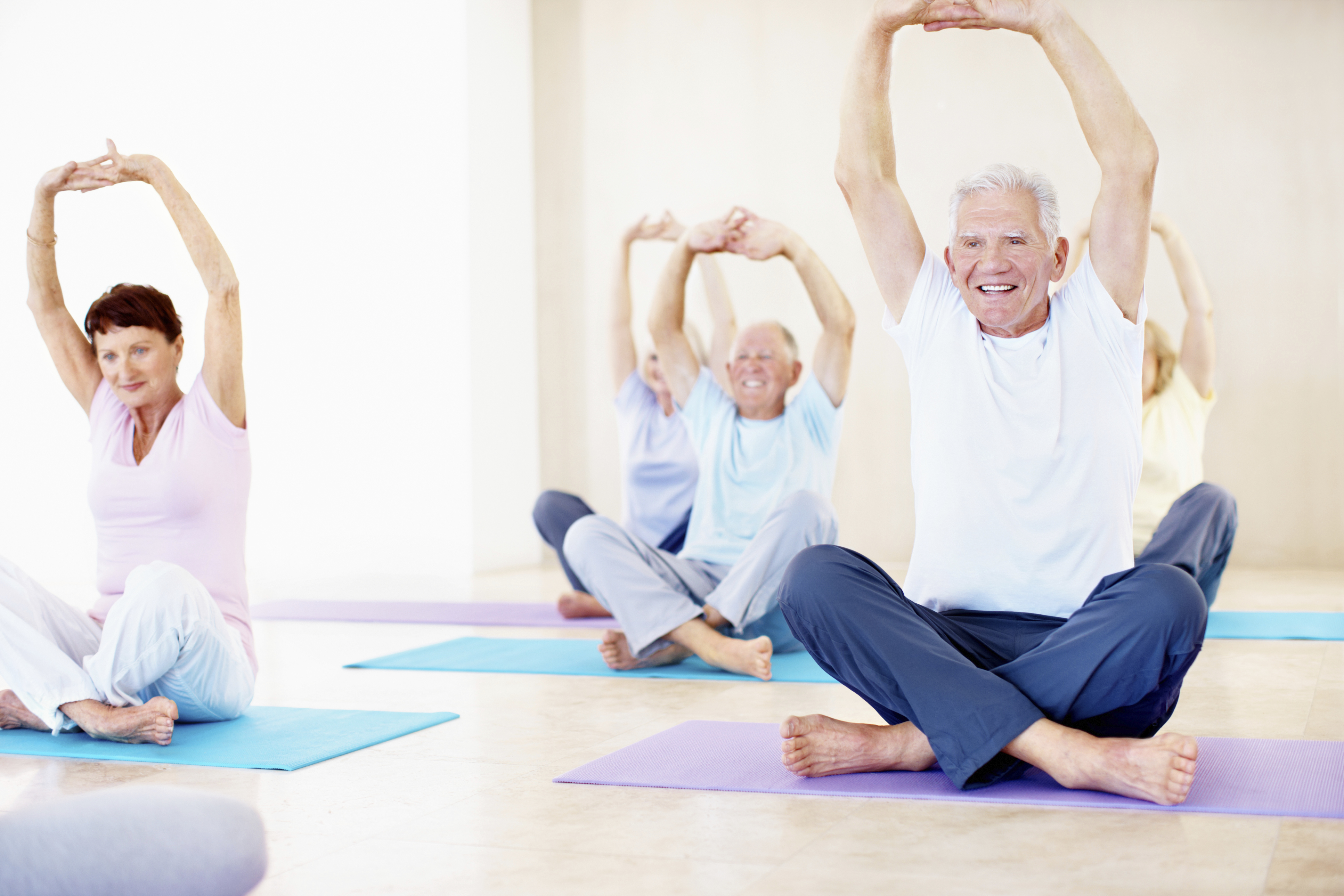We all know how intimidating it can be to start a new fitness class or gym membership — and that intimidation factor can prevent you from trying new things.
But taking some time to understand what’s involved with certain physical activities and classes can relieve anxiety and build confidence to get you out the door.
September is National Yoga Month. September is behind us, bu this is still the perfect time to take a sneak peek at what’s involved in practicing beginner’s yoga.
National Yoga Month was started by the Department of Health and Human Services in 2008 to help motivate people to achieve a healthy lifestyle.
Pre-yoga Checklist
What kind of yoga should I take?
According to the American Yoga Association, there are more than 100 distinct styles of yoga. With names like “bikram,” “ashtanga,” and “Iyengar,” you may feel intimidated to join in.
But fledgling yogis can safely choose a basic beginner’s class to get their feet wet. Look for courses called “Beginning Yoga,” “Intro to Yoga,” “Yoga for Seniors,” or “Restorative Yoga” to ensure a low level of difficulty and gentle pacing.
What do I need to bring to class?
Check with the gym or yoga center where the class is being held to find out if you need to bring anything with you to class.
Many classes supply all equipment needed to yoga students.
Yoga mats are often provided, along with other tools such as exercise balls, yoga blocks and straps that can help with certain poses. However, if you have a mat of your own that you prefer, you can use that instead.
You may want to bring a small towel (all that stretching can make you sweat!) and a bottle of water as well.
What should I wear?
Comfort is key in all forms of yoga. While there are many yoga clothes designed to fit all body shapes, wearing any type of comfortable stretchy pants and top will do. Clothing intended for other types of workouts like running and biking can also work well for yoga. Yoga is generally practiced barefoot, so you don’t need to worry about purchasing fancy footwear.
Should I eat before a yoga class?
There’s no need to practice yoga feeling hungry, though you should avoid overeating before class as well.
Many yogis and practitioners suggest eating roughly two hours before a class in order to give your body time to digest the meal – and to avoid any stomach discomfort during class.
A smart approach is to listen to your own body, and eat the right amount for you to feel nourished and strong for the stretches but not overly full.
However, it may be a good idea to avoid rich or spicy foods (or any foods that you have a hard time digesting) before a yoga class – or any form of exercise for that matter!
What questions should I ask my instructor?
Certified yoga instructors are trained to help each individual in their classes practice the poses safely.
For instructors to best guide you, it’s important to let them know about any injuries or pre-existing health conditions that you have prior to starting the class. Ask your instructor whether the class is appropriate for you given your current fitness level and specific health profile.
What do I do if I fall behind in class?
Even in beginner’s classes, you may find certain moves difficult or too strenuous.
Always listen to your body first and foremost, and don’t strain to get into positions that feel uncomfortable or painful for you. Yoga isn’t about keeping up with everyone else, but instead about being mindful in your practice.
Your instructor will understand if you don’t do every pose or fall behind the pacing.
If you need to rest, just sit on your mat in a cross-legged position and wait until you feel ready to rejoin the posture practice.
What if I don’t understand yoga lingo?
Many yoga poses have Sanskrit names that can sound confusing. Yet these names are generally paired with common terms that the layperson can understand.
Here are four examples of common “asanas” (also called poses) with their Sanskrit names deciphered, along with links that show an example of each pose:
- “Tadasana” is the name for Mountain Pose.
- “Balasana” is the name for Child’s Pose.
- “Adho Mukha Svanasana” is the name for Downward-Facing Dog.
- “Virabhadrasana” is the name for Warrior Pose.
Now that you know what to expect at your first yoga class, there’s no excuse not to try it!
Jill Roberts is a creator and editor at WellnessGeeky Blog. She is a proud mother of two children and share a great passion for green and sustainable living. Jill enjoys writing about massage therapy, medical, health issues, and everything that can bring joy & health into people’s lives.






